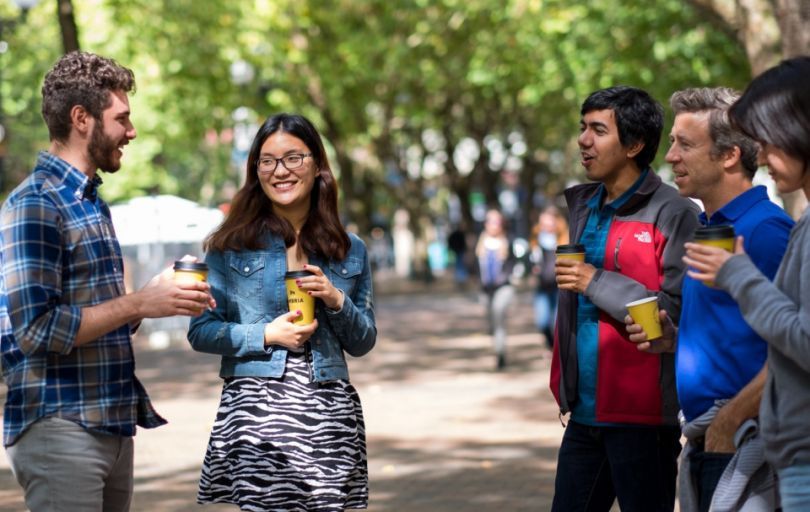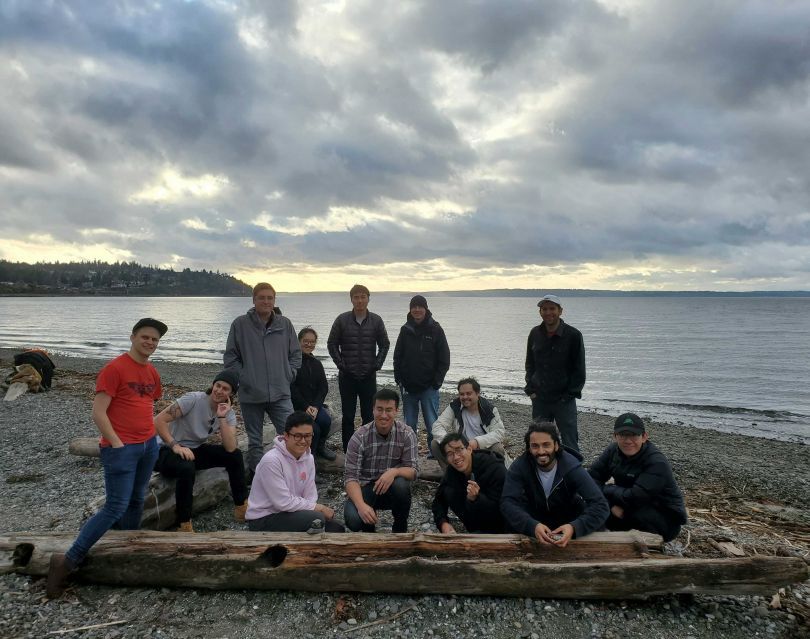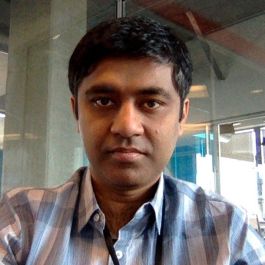When company leaders at Qualtrics sat down to outline the crux of their culture in 2016, they decided to start with what already worked. And at a company with around 1,000 employees, that wasn’t difficult to identify.
“The team started with thinking about the people who were the ‘most Qualtrics’ of everyone at the company,” Chief Marketing Officer Kylan Lundeen was quoted saying in a 2019 company blog post. “We asked, ‘Who are the people who are the raddest culture adds at Qualtrics?’ And what is it about them that embodies ‘us’ the most?’”
Enter, TACOS: a cultural foundation built upon the core values “transparent,” “all in,” “customer obsessed,” “one team,” and “scrappy.” The software company — which helps employers and professionals capture and act on customer, product, brand and employee experience insights all in one place — attributes everything from the creation of employee resource groups to the development of social good initiatives back to the acronym. Take, for example, 5 For The Fight, a crowd-funding campaign Qualtrics’ founders began during the business’s annual experience management summit to help beat cancer.
According to Anmol Matada, a senior manager of software engineering, that foundation is both essential for remote work and a differentiator now just as much as it was six years ago. “Lindsay McGregor wrote an HBR article that said, ‘A great culture is not easy to build — it’s why high-performing cultures are such a powerful competitive advantage,’” Matada told Built In.
Matada is a member of Women’s Leadership Development (WLD) and MosaiQ, groups that aim to empower women at Qualtrics to thrive and advance the careers, goals and well-being of people of color. WLD and MosaiQ are two of many company “Q Groups,” or channels for people who have shared experiences or interests to connect through values and action.
Below, he and a senior director of product management, Claire Fang, share how Qualtrics has successfully created a high-performing culture, and how that culture directly affects product vision, employee experience and execution.
How would you describe the company culture at Qualtrics?
Anmol Matada, Senior Manager, Software Engineering: “Customer obsession” starts as our foundation, “one team” serves as our building blocks, and “being scrappy” drives our momentum. Finally, we cannot deliver our product without being “all-in” on everything we do and being transparent in every facet of our work.
Claire Fang, Senior Director, EX Product Management: Our culture is defined by our TACOS values. I feel the “one team” value every day when we come together to collaborate. Everyone pitches in to contribute, and in my opinion, this is the hallmark of the culture at Qualtrics.
The other value that strongly resonates with me is “all-in.” At Qualtrics, people take an owner’s mentality. I get the sense that they care about the company doing well no matter their role. From engineering to sales, people care about the impact that their work has on the company and people around them. That’s the owner’s mentality. I have worked at both large companies and small startups and I have found that at large companies, people’s roles are usually defined by their job descriptions. In a startup, there’s no clear boundary. If the company doesn’t do well then you’re not going to do well. We’re not a startup anymore but that owner’s mentality is still here.

What is the biggest challenge in maintaining a consistent culture across a remote, distributed workforce? What is one way you have been able to overcome that challenge?
Matada: When companies move to a remote or hybrid work environment, two key issues come up. One is maintaining a consistent culture, and the other is scaling that experience to new employees who joined after you introduced a remote work model.
Our brand experience engineering teams are constantly experimenting with different ways to bring people together in our hybrid work environment. We have tried online team lunches, in-person lunches for those who feel comfortable with them, games, quarterly team events, online pair programming, and in-person planning sessions. The key is to constantly evolve while keeping TACOS as our foundation.
Fang: My team grew from two to 17 people in three years. The bulk of the team started their jobs in a virtual workplace. That meant working harder to ensure these employees still felt the culture in a remote environment. When you don’t meet in person, it is a challenge to keep culture visible and tangible on an everyday basis. That said, there are certain ways you can reinforce the culture. For example, be mindful of how you behave and show up in every meeting. How you show up when challenges arise defines you as a leader. People observe how leaders behave, so when I come into a meeting and I’m approaching it from a “one team” perspective, my team sees, hears and ultimately imitates that.
Creating the occasional opportunity for people to come together for meaningful interactions also helps maintain culture. Even after we’re out of the pandemic, we will still have to create those opportunities to physically come together. We are trying to currently host quarterly offsites for our teams. Those types of activities help people come together, creating more culture carriers.
How does the culture reflect your personal values and your daily work?
Matada: Qualtrics, through its TACOS, has a culture that acts a guiding light for all of us in everything we do. Personally, at work I have three motivators, which I call PPP or 3P: people, product and partners. I want to help my team and colleagues be successful. I would like to build software that makes a difference. And I want to have successful partnerships.
Fang: My number one value is impact. I want to have an impact through the work I do for customers and my team, so the “all-in” value really resonates with me.
In addition, I believe in diversity and collaboration. When people have diverse backgrounds and perspectives, they create things that are far better than one person is capable of. My team creates products, but we don’t do that in a vacuum. There are mechanisms to hear different perspectives from different teams so that we can leverage that feedback for our customers. We rely on our customer success, sales, technical consultant and product marketing teams to contribute customer insights to our product managers. What they do for us may not be in their job description, but they do it for the better of our products, customers, and ultimately the company as a whole.
How do the company’s ERGs contribute to the overall mission?
Fang: Qualtrics has what we call “Q Groups,” which create communities and channels for people who have different experiences or interests to connect. They are safe spaces to advocate for policies and to voice concerns, and they regularly host thoughtful activities across the company. Our mission at Qualtrics is to close experience gaps. Q Groups are critical to creating better human experiences. I have personally benefited from Women’s Leadership Development (WLD), specifically partaking in their speaker series.
Our employee resource groups improve experiences for all employees, not just for those in the groups. Early on in the pandemic, there were a lot of Asian hate crimes in the news. Our Asian employees were feeling a sense of fear and anger. We quickly started a Slack channel for people to connect and speak out about those feelings. It was an informal group, but it gained big momentum, and we were able to highlight those experiences at our company all-hands meeting. This brought awareness and built allyship across the company.

How are they different from typical employee resource groups?
Fang: The company culture at Qualtrics makes a difference in how our ERGs are run. The “all-in” value means that you are here not just for your job but also to make the company better. When people participate in our Q Groups, they are actively making the company better. I am always amazed at the amount of work they do on a volunteer basis outside of their core jobs. We see contribution across levels. At other companies, I have seen these types of efforts driven solely by senior-level team members. But at Qualtrics, all levels contribute to make the company a better place.
Tell us a bit about 5 For The Fight. How did it come to be and what has the internal response looked like?
Matada: 5 For The Fight provides a way for everyone to easily contribute to cancer research with hope of bringing it to an end. I have regularly contributed to the cause as part of payroll contributions and participate in some of its activities.
Fang: I like working for companies that do more than just generate returns for shareholders. At Qualtrics, doing good means not only doing good with our products and services but through efforts like 5 For The Fight as well. I want to work for a company that wants to do better for society as a whole. I have been impressed with the focus year after year. Other companies’ philanthropic initiatives sometimes taper off after a while, but at Qualtrics they continue to gain momentum.
Every year our 5 For The Fight efforts get bigger and better. Last year, we tried to break the world record for the longest virtual high five chain. I was inspired by seeing the videos all over LinkedIn, and the ripple effect it had beyond the team at Qualtrics. We also gamified our donation efforts. We divided all of our employees into teams and had a contest to see which group could set up the most recurring donations to 5 For The Fight. Contributing was easy to do and we got great responses.
How do you see the culture evolving as the company continues to grow?
Matada: One of the biggest challenges companies face as they grow is silos. Qualtrics has been successful so far because we work as one team. As we grow, we have to evolve how we interact, build better products, and maintain relationships with customers and partners. Qualtrics has enabled smaller teams to build their own identity while TACOS continues to be a guiding light for the company overall, helping us grow and scale successfully.






